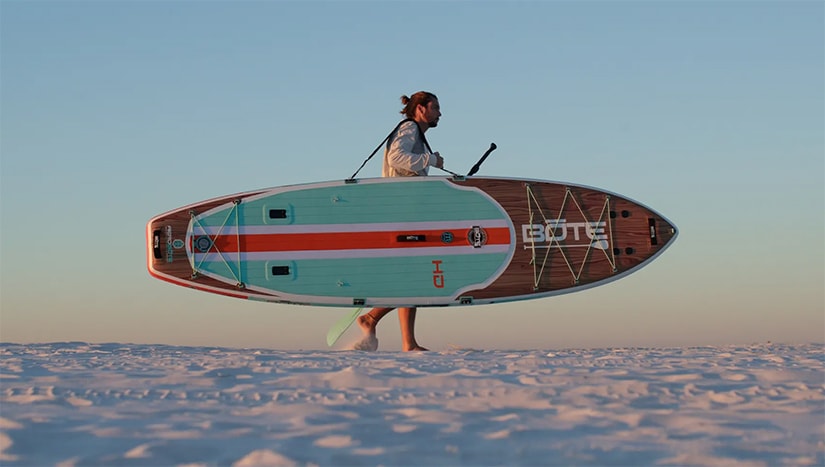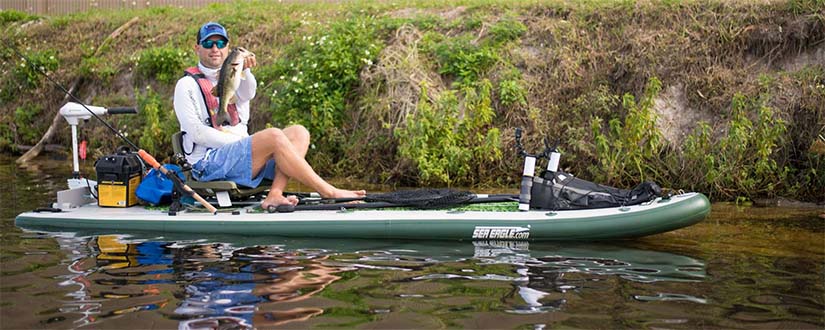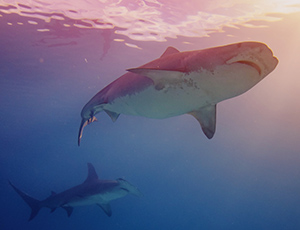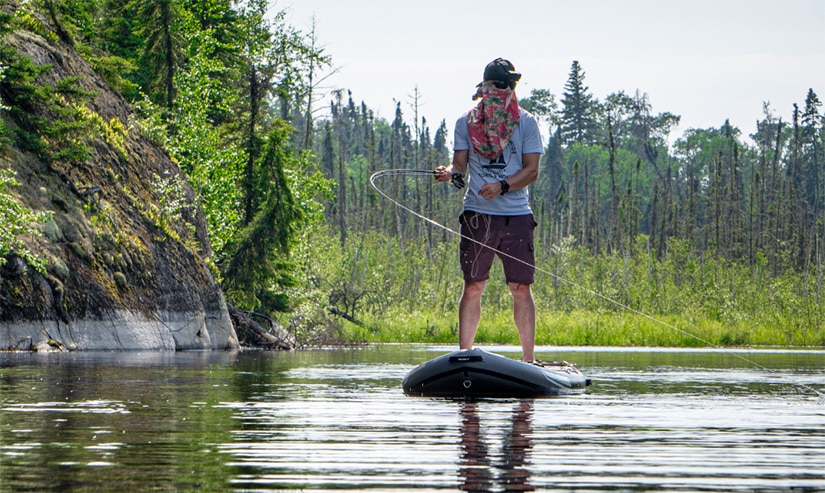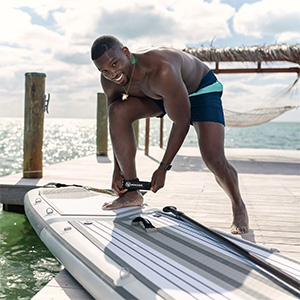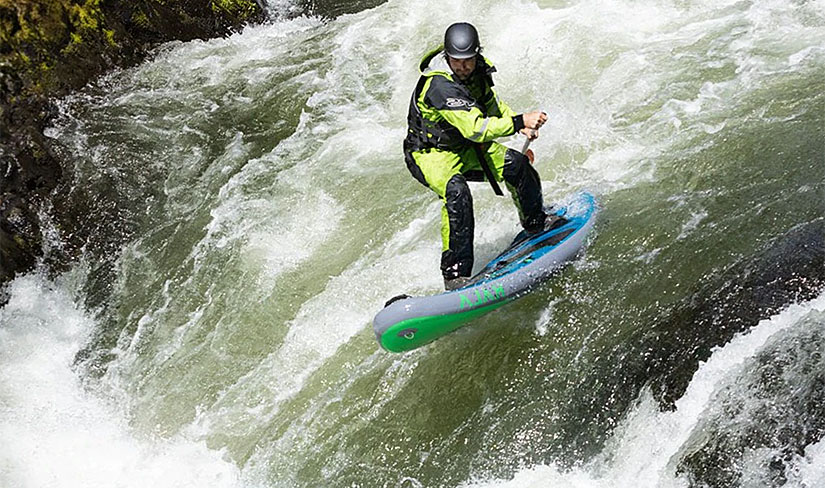Paddle boarding with loved ones is fun, but it’s not always possible to take to the water as a group. Your partner may be held up somewhere or not just feeling up to it, or you may just want to take some alone time out on the water.
While it’s advisable to paddle with a partner from a safety perspective, going solo can also be a fantastic experience. But when you decide to paddle board alone there’s the obvious question of safety.
So, here is everything you need to know about solo paddle boarding.
Is It Safe to Go Paddle Boarding on Your Own?
Paddling solo is safe but it depends on where and when you’ll be paddling.
Stand up paddle boarding is a generally safe activity but like any other sport it has its risks, especially since it’s a water activity.
When you’re alone, there are more things that could go wrong. For instance, if you get hurt you won’t have someone to help you get back to shore. You’ll be all on your own out there.
So while it’s safe to go paddle boarding on your own, you have to be extra careful and take all the necessary precautions.
The Benefits of Solo Paddle Boarding
It’s no secret that everyone needs some alone time every once in a while. Paddling alone allows you to get away from everything and everyone, so you can enjoy your own company and clear your head. You get to paddle in silence, listening to the beautiful sounds of nature and the sweet sound of your paddle splashing water.
This in and of itself feels like a beneficial thing – it’s important to switch off, get off our phones and get some exercise in the process.
Another benefit of solo paddle boarding is that you can go paddle boarding whenever you want. You don’t have to wait for anyone or plan around anyone’s schedule. Sometimes you can suddenly find yourself with some free time and nothing to do. Instead of going around asking who’s free to go SUPing, you can just pick your board and go on your own.
Lastly, you can take as much time as you need out in the water (provided the water and weather conditions allow it). You can extend your session until you’re ready to go home.
The Downsides of Solo Paddle Boarding
One of the most obvious downsides of paddle boarding alone is that when you’re alone you’ll have no one to help in case of anything. There was an incident in Hawaii where a shark bit off a paddler’s board, deflating it.
Thankfully, there was another paddler close by and the two used his SUP to get to the shore. It’s scary to imagine what would have happened if the paddle boarder was alone.
The other downside is that it can get lonely. Sometimes SUP is better with friends or family. Unless you prefer paddling alone, you’ll want to have someone to share the beautiful moments with.
Safety Tips for Paddle Boarding Alone
Solo paddling is safe. But in addition to the usual safety precautions, you need to take other extra measures. Have in mind that you won’t be able to access immediate help should you need it.
So here is what you should do to make sure you’re properly prepared and safe.
Pick Your Location Carefully
Location is key when it comes to solo paddling safety.
I recommend going somewhere you already know, closer to home, especially if you’re more of a beginner. Not only is it safer, but you’ll also feel more comfortable.
If you have been paddling for a while, your usual location would be a great place to start your solo adventure.
Calmer locations like lakes and bays are also better. They are more predictable than fast-moving rivers and the open ocean.
Once you know where you’ll be going, get down to researching. Go on Google Maps and learn everything you can about the area.
Research the weather–wind, temperature, tide–so you know what to expect. Wind direction and wind speed are especially important because you might have to paddle into the wind on your way back when you’re a little tired.
After collecting all that information, plan your route, carefully taking your paddling ability into consideration. Plan where you’ll get in and out of the water and a plan B in case things don’t go as expected. Have multiple exit points as well because something may happen, making it impossible for you to get to your original exit point.
Tell Someone and Leave a Float Plan
Make it a habit of letting someone know where you’re going–whether you’re going away for a few hours or for a trip that lasts multiple days – make sure you tell someone. This can be a trusted and responsible friend or family member.
If something happens (hopefully it won’t) you want somebody to be able to find you. Notify them of where you’ll be paddling, your route, and how long you expect your trip to take. Leave instructions on what they should do if they don’t hear from you after an agreed period of time.
Know What to Bring
One good thing about picking out a location and planning your trip in advance is that you won’t struggle, wondering what to bring.
Here are some essential items for your solo paddling trips:
- Leash
- Life jacket
- First aid kit
- SUP lights (if you’ll be paddling at night)
- Snacks and water
- Change of clothes
- Hard copy map (especially if it’s not your usual location)
- Whistle
- Backup solar charger
- Repair kit (if you have an inflatable SUP)
- Hunting knife
- Lighter
- Kayak paddle (in case you have to sit down while paddling against the wind)
Note: Always ensure that you wear your leash and life jacket while paddle boarding – it’s for your own safety. Remember that they only work if you wear them.
You’ll need a dry bag for things like money and your communication equipment. A good paddle boarder always prepares for immersion. This way, if you flip you’ll still be able to use your phone if necessary.
Speaking of which…
Don’t Forget Your Phone
For many people, the whole point of going on a solo paddle boarding trip is to unplug from their day-to-day life and electronic devices are a big part of that life.
However, for safety reasons, you can’t afford to leave your phone at home when paddle boarding alone.
Make sure your phone is charged, and bring a backup power supply if you can. This ensures that you can easily call for help if you need to, so you don’t have to wait until someone else finds you.
Additionally, having a mobile phone with you gives you access to many different paddle boarding apps. These apps have all kinds of cool features such as fitness tracking, detailed weather information, route tracking, and more.
Some of them even show you real-time water levels on various rivers and give you real-time wind information. This ensures that you don’t run into any unpleasant surprises.
Don’t Push Your Limits
Consider your paddling skill level and endurance level while planning your solo paddle boarding trip.
If you’re a beginner, it wouldn’t be very wise to go on your first adventure in the ocean or a fast-moving river.
It may seem obvious, but beginner paddlers should be move cautious. It’s not a good idea to plan a five-hour trip for your first solo experience when you’ve never paddled that long before!
Pick a location that you’re absolutely sure you can handle. If you’re not a pro, stick to flat water, like lakes and bays where the water is calm and easier to handle. Experienced people can pick slightly more challenging locations but still, don’t forget that you’ll be alone the whole time.
I recommend picking a place that would be considered easy for a person of your skill level.
Also consider the entirety of your trip and plan accordingly. Paddling out is fun and easy because you still have the energy. Don’t get carried away and forget that you have to paddle back–especially if you’ll be paddling against the wind on your way back.
Lastly, make sure you are well-equipped to handle anything that might happen. Do you know how to self-rescue?
Sit down and come up with a list of everything that could go wrong. Think of things like equipment failure, the weather changing, etc.
If you lose your paddle, can you prone paddle board back to shore? If the wind picks up and it’s stronger than you expected, can you still make it back?
How About Paddle Boarding Alone at Night?
Paddling at night is such an awesome experience but, honestly, I wouldn’t advise someone to do it alone, especially beginners.
It is riskier because first, the visibility is low and it’s also hard for other water users to see you. This raises more safety concerns. It’s easy to bump into obstacles and get knocked over by boats–all this on top of the risks of paddling solo during the day.
For experienced paddlers who want to give it a try, make sure you get a good SUP light system and follow the safety precautions we’ve discussed above.
Wrapping Up
Paddling with a partner is safer but going out on your own doesn’t have to be unsafe. The key is understanding that the risks are more because you’re alone and planning adequately.
Firstly, pick your location carefully. Be sure to choose a place you’re already familiar with because you’ll have an idea of what to expect. Once you have the location, do your research and assess the weather so you can prepare properly.
Make a list of everything you’ll need and get a waterproof bag for your valuables.
Wear your leash and PFD at all times while paddling–I can’t emphasize this enough.
Finally, don’t overestimate your paddle boarding skills. Be realistic about what you can handle because you won’t have someone to help you if things go south.
Have fun and stay safe!

